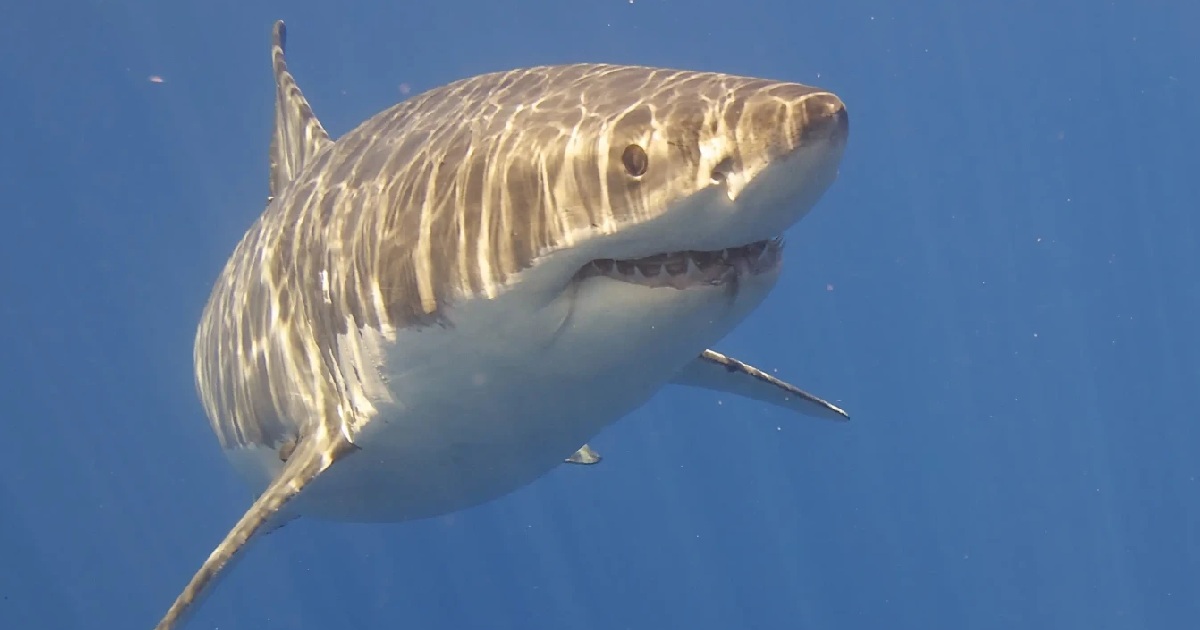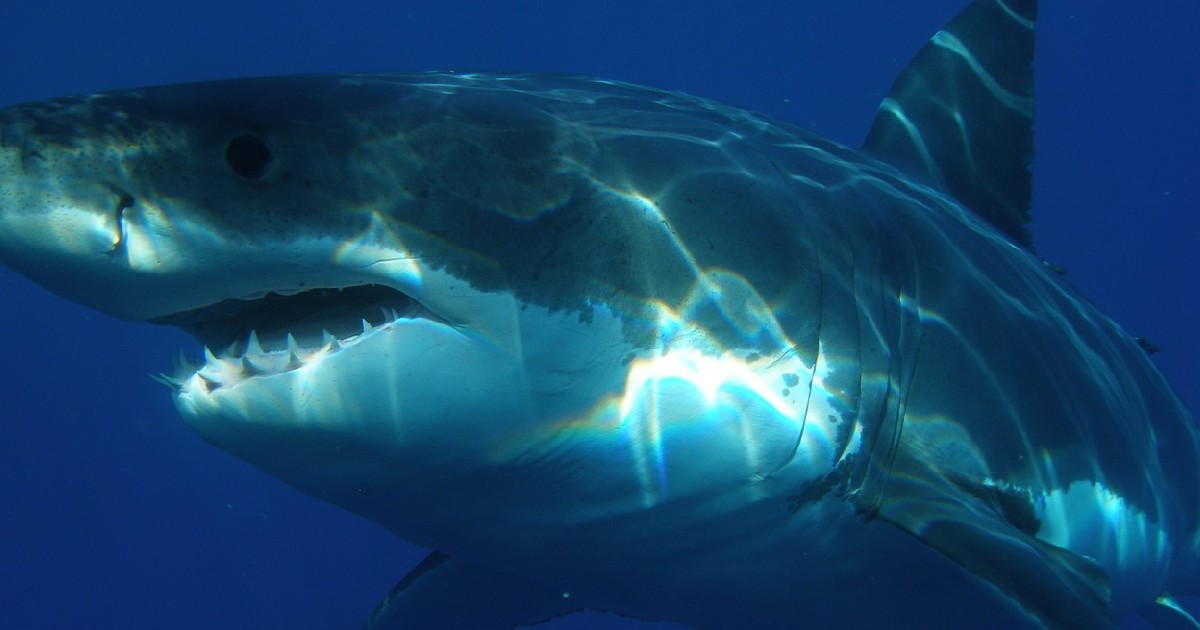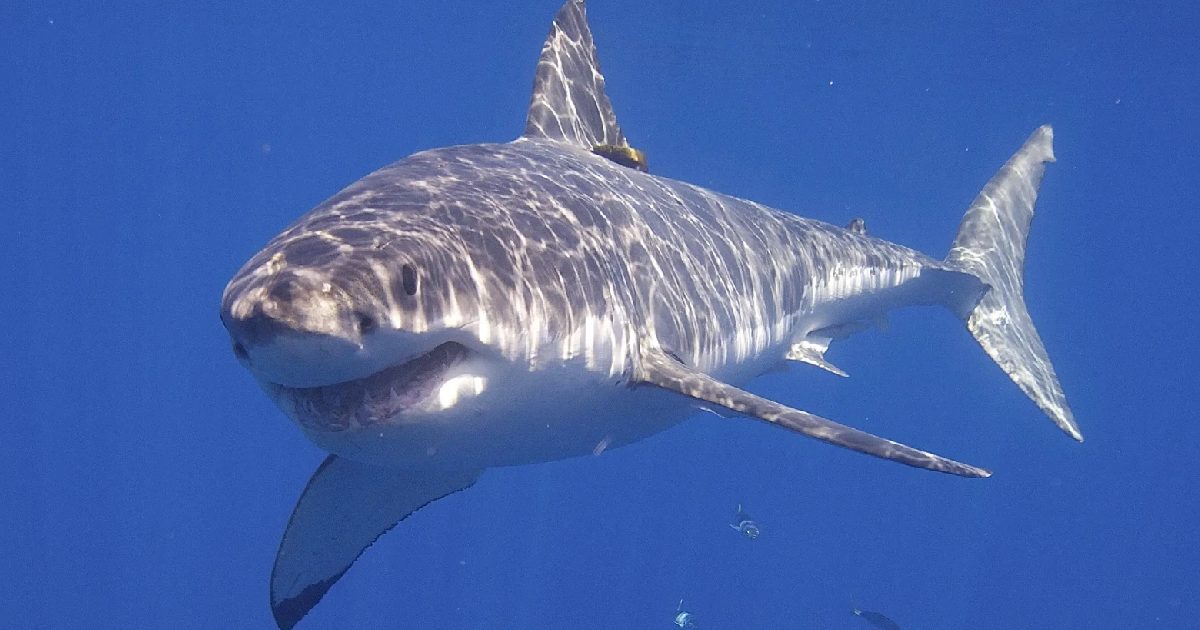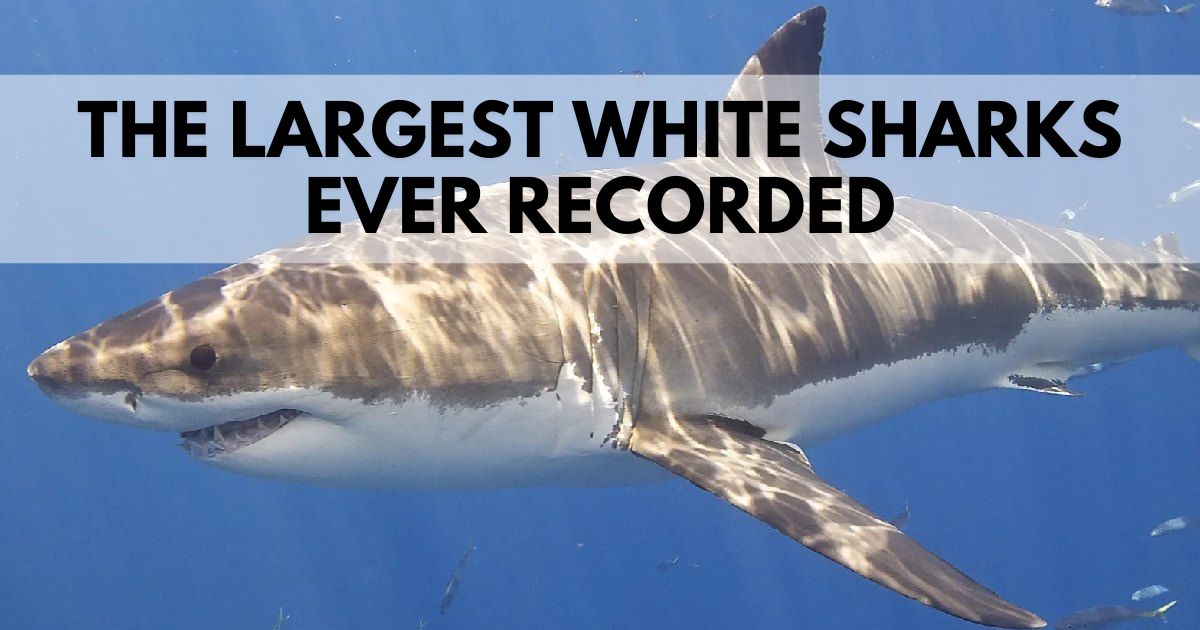
Great white sharks have long fascinated and terrified humans in equal measure. These magnificent predators rule the oceans, and their sheer size has given rise to countless tales and legends. This article delves into the stories of the largest white sharks ever recorded, offering a detailed look at these incredible creatures. From the famed “Deep Blue” to the legendary Port Fairy Shark, we’ll explore their astonishing sizes and the unique circumstances of their encounters.
The Prince Edward Island Shark
- Measured Length: 20 feet (6.1 meters)
- Year: 1988
- Captured By: Canadian Shark Research Centre
In 1988, a colossal great white shark was caught off the coast of Prince Edward Island, Canada. This shark measured an impressive 20 feet in length and was captured by the Canadian Shark Research Centre. This encounter added significant knowledge to the study of great white sharks, as it provided scientists with valuable data on their size, behavior, and migration patterns. The Prince Edward Island shark remains one of the largest white sharks ever documented, highlighting the importance of Canadian waters as a habitat for these apex predators.
The New Brunswick Shark
- Estimated Length: 18 feet (5.5 meters)
- Location: New Brunswick, Canada
- Sighted By: Fishermen and Researchers
Another notable encounter occurred in New Brunswick, Canada, where an enormous great white shark estimated at 18 feet was sighted. This giant shark was observed by local fishermen and researchers, who were astounded by its size. The waters of New Brunswick have been a site for several significant shark sightings, making it an important region for the study of these marine giants. The New Brunswick shark exemplifies the diverse habitats that great white sharks occupy and their adaptability to different marine environments.
The Legendary Port Fairy Shark
- Estimated Length: 23 feet (7 meters)
- Location: Port Fairy, Australia
- Year: 1870s
The Port Fairy Shark is one of the most legendary and controversial great white shark records. In the 1870s, a massive shark was reportedly caught near Port Fairy, Australia, measuring an astonishing 23 feet. While this measurement has been disputed over the years, it remains one of the largest claimed sizes for a great white shark. The story of the Port Fairy Shark has become part of the folklore surrounding these ocean giants, illustrating the long-standing human fascination with great white sharks.
Western Australia’s Giant Shark
- Estimated Length: 20 feet (6.1 meters)
- Location: Western Australia
- Sighted By: Local Divers and Fishermen
Western Australia is known for its rich marine biodiversity, including some of the largest great white sharks ever recorded. One such giant, estimated to be around 20 feet long, was sighted by local divers and fishermen. The clear, blue waters of Western Australia provide an ideal habitat for these predators, attracting numerous great white sharks where this female caught. The sightings in this region contribute to our understanding of their behavior and the ecological role they play in marine ecosystems.
The False Bay Behemoth
- Estimated Length: 19.5 feet (6 meters)
- Location: False Bay, South Africa
- Recorded By: Notable Shark Expert
False Bay in South Africa is another hotspot for large, great white sharks. One of the most impressive sharks recorded here was estimated at 19.5 feet. This behemoth was observed by a notable shark expert, adding to the growing body of research on great white sharks in this region. False Bay’s unique geography and abundant prey make it a prime location for studying these magnificent creatures.
Speculative Sightings of Massive Great White Sharks

Recent accounts suggest there have been sightings of great white sharks exceeding 7.0 meters. J. E. Randall assessed these reports, confirming the possibility of a shark around 6.1 meters long. The famous great white known as “Deep Blue,” estimated at this size, was featured in the 2014 Shark Week episode “Jaws Strikes Back.” She reappeared in January 2019, feasting on a sperm whale carcass near Ohau.
Great white sharks are known to feast on sperm whale carcasses, which provide a significant source of nourishment. These events often attract multiple shark species, including tiger sharks and other shark species.
The Role of Shark Research Organizations

Canadian Shark Research Centre
The Canadian Shark Research Centre plays a crucial role in documenting and studying great white sharks in Canadian waters. Their work has provided insights into the behaviors and sizes of these magnificent creatures. Notable shark experts from the center continue to contribute to global shark research, ensuring the preservation and understanding of these giants.
International Game Fish Association
The International Game Fish Association (IGFA) maintains records of the largest fish caught, including great white sharks. Their documentation efforts are vital in verifying the sizes of captured sharks, contributing to the scientific community’s knowledge. The IGFA’s work helps dispel myths and provides a factual basis for understanding the true potential size of great white sharks.
Conclusion
Great white sharks continue to captivate our imagination with their immense size and mysterious nature. From the famous Deep Blue to the legendary Port Fairy Shark, these ocean giants remind us of the incredible biodiversity that exists beneath the waves. As research and conservation efforts continue, we hope to learn more about these majestic creatures and ensure their survival for generations to come. The stories of the largest white sharks are not just tales of size but also a reflection of the awe-inspiring power and beauty of nature.
Frequently Asked Questions (FAQs)
What is the largest recorded great white shark?
The Guinness Book of World Records lists two exceptionally large, great white sharks. One was a 10.9-meter (36-foot) specimen caught in the 1870s near Port Fairy, Australia, and the other was an 11.3-meter (37-foot) shark found trapped in a herring weir in New Brunswick, Canada, during the 1930s. Both measurements are controversial, as modern scientific methods question their accuracy.
Are there 25-foot great white sharks?
While there are unconfirmed reports of great white sharks reaching lengths of up to 25 feet, the largest reliably measured specimens are around 20 feet. Notable examples include Deep Blue, a well-documented female great white estimated at 20 feet, and a shark captured off Prince Edward Island measuring a confirmed 20 feet. Thus, sharks exceeding 25 feet remain speculative and unverified.
Is there a bigger shark than the great white?
Yes, the whale shark holds the title of the largest shark species, with individuals reaching lengths of up to 40 feet or more. Unlike the predatory great white whale sharks are filter feeders, consuming plankton and small fish. The basking shark is another larger species, growing up to 36 feet and also feeding primarily on plankton. Both these sharks surpass the great white in size.
How big are great white sharks?
Great white sharks typically range from 15 to 20 feet in length, with females generally being larger than males. The average weight of a great white is between 1,500 and 2,400 pounds. Some exceptional individuals, such as Deep Blue, can reach up to 20 feet and weigh over 5,000 pounds. Their robust size makes them apex predators in marine ecosystems.
What are the 3 biggest sharks?
The three largest shark species are:
1. Whale Shark – The largest, reaching up to 40 feet or more, and a filter feeder.
2. Basking Shark – The second largest, growing up to 36 feet, is also a filter feeder.
3. Great White Shark – The largest predatory shark, typically reaching up to 20 feet, with some individuals like Deep Blue estimated at 20 feet. These species showcase the diversity in size and feeding habits within the shark family.

